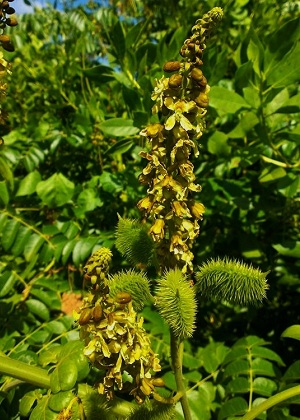
Copyright by: Kristen Finch, 2013
In habitat, John D. MacArthur Beach State Park, Florida
Family: Fabaceae
Group: Dicot
Substrate:
Terrestrial
Habit:
Vine
Perennation:
Perennial
Native Range: Peninsular Florida, the West Indies, Mexico, Central America, South America and the Old World.
Map of select IRC data for peninsular Florida
IRC SOUTH FLORIDA Status:
Secure
SOUTH FLORIDA Occurrence:
Present
SOUTH FLORIDA Native Status:
Native
SOUTH FLORIDA Cultivated Status:
Cultivated
Comments: For more information and images, visit our
Natives For Your Neighborhood website.
Synonyms: Guilandina bonduc, Guilandina bonducella, G. crista.
